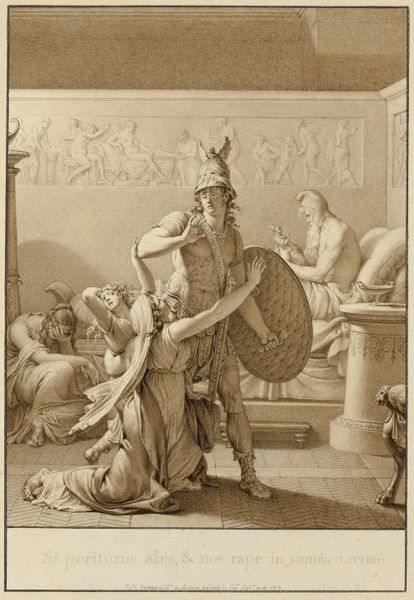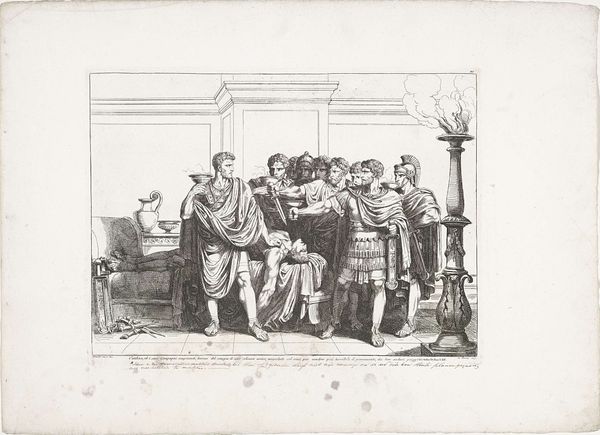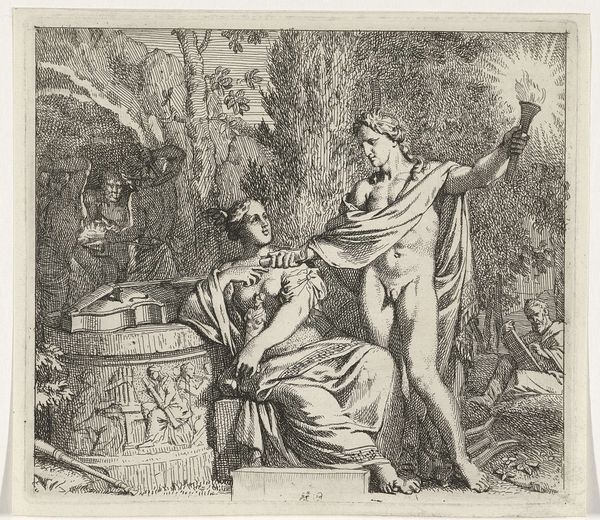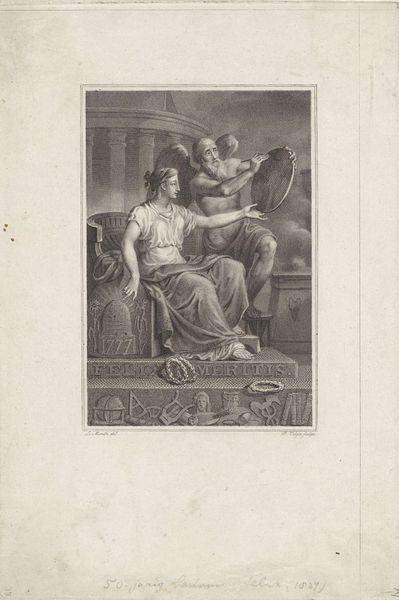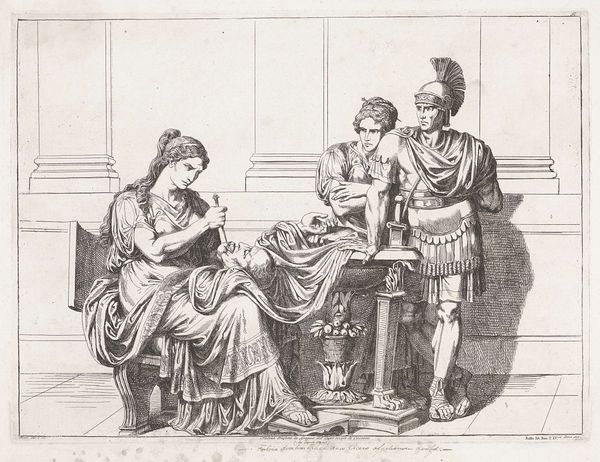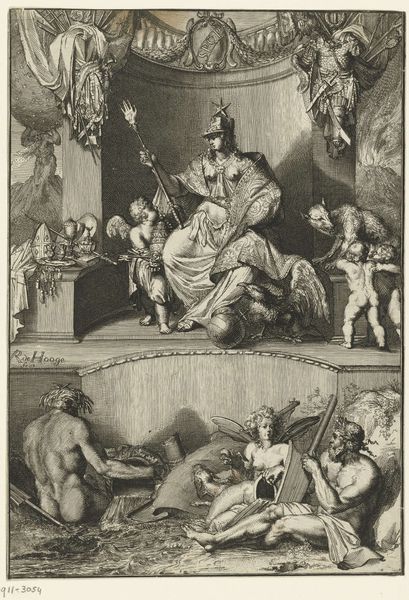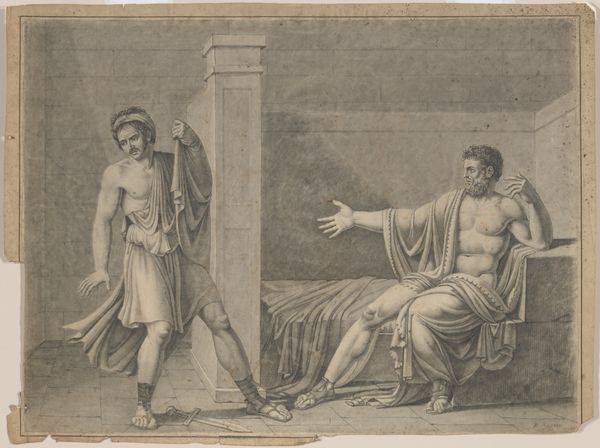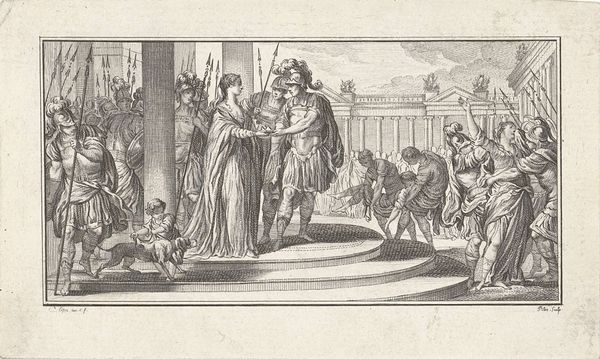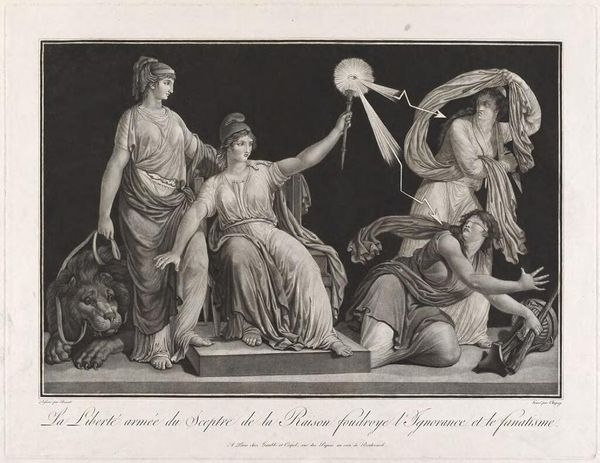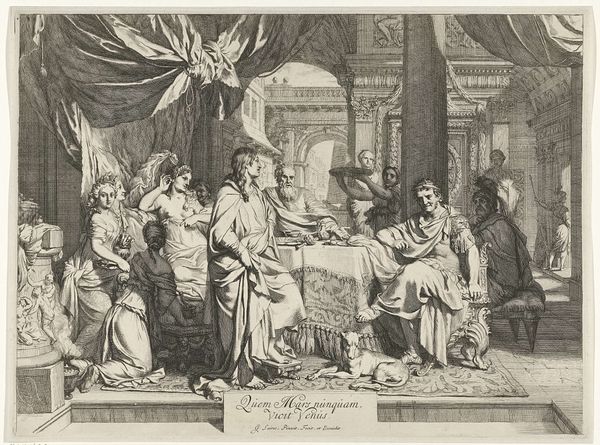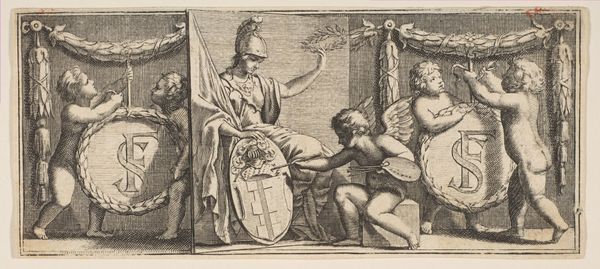
print, engraving
#
neoclacissism
# print
#
figuration
#
line
#
history-painting
#
engraving
Dimensions: height 316 mm, width 428 mm
Copyright: Rijks Museum: Open Domain
Bartolomeo Pinelli made this print, "Brutus and the ghost of Caesar," sometime in the early 19th century using etching, a printmaking technique that relies on careful mark-making. Pinelli would have coated a metal plate with a waxy, acid-resistant substance, and then scratched an image into that coating with a sharp needle. This would expose the metal, allowing it to be eaten away when submerged in acid. The longer the plate sits in the acid bath, the deeper the lines become, ultimately holding more ink. Look closely, and you'll see the dense network of hatched lines, carefully built up to create areas of tone and shadow. It’s a labor-intensive process, demanding great skill and patience. But the real social significance of etching lies in its reproducibility. Unlike a unique painting or sculpture, prints like this one could be made in large numbers and distributed widely, allowing Pinelli's vision of ancient Rome to reach a broad audience. Etching democratized art, making it accessible beyond the walls of palaces and wealthy estates.
Comments
No comments
Be the first to comment and join the conversation on the ultimate creative platform.

